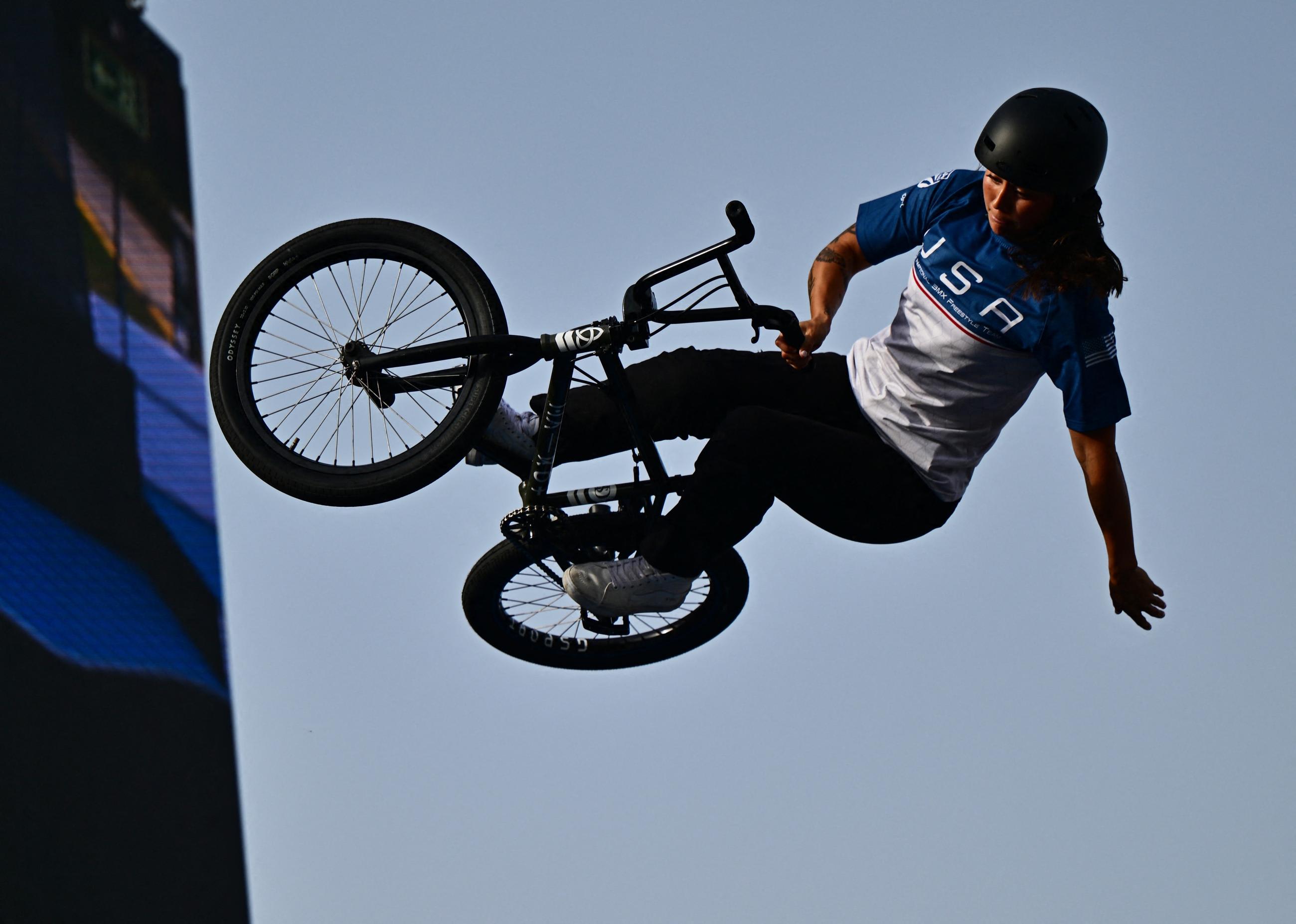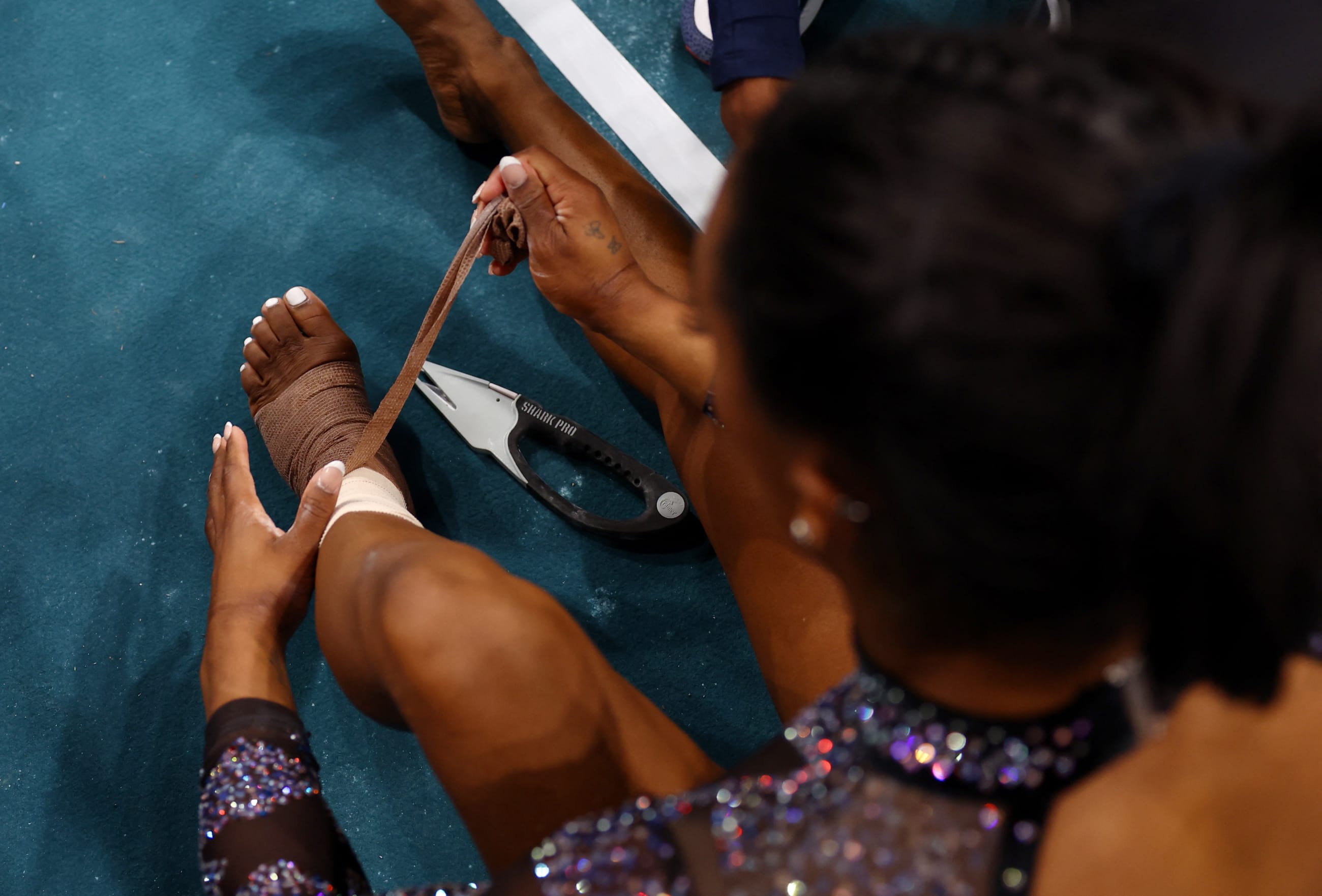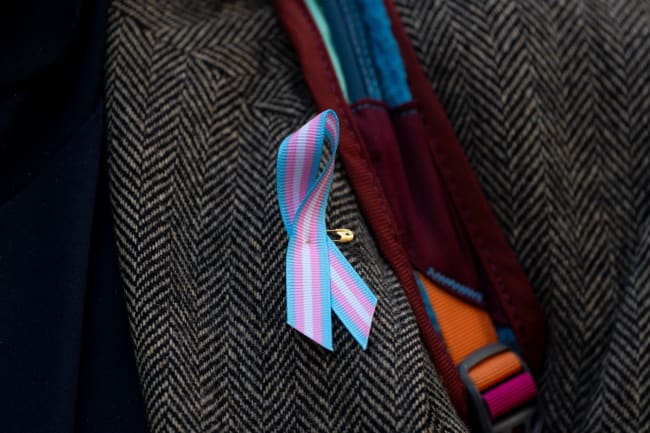The Paris Olympics bring to the forefront an overlooked topic in global health: injuries.
On Tuesday, U.S. Olympic gymnastics champion Simone Biles overcame pain in her calf to lead her team to a gold medal, walking with a limp between events. Hopeful Skye Blakely ended her bid to join the team in late June after rupturing her Achilles tendon during a tumbling pass. She joins several other young women athletes, including distance runner Alicia Monson and sprinter Elaine Thompson-Herah, who have been forced to withdraw from Olympic trials because of injury.
According to the Global Burden of Disease (GBD) study, in 2021 injuries made up about 6% of the world disease burden. However, competitive athletes still suffer injuries at three to five times the rate of the general public, despite access to the best coaches, training, and equipment and maintaining excellent physical shape.
As women's sports continue to grow in terms of participation and popularity, more awareness and investment is necessary to understand the epidemiology of injury among female athletes and to prevent adverse outcomes—for their athletic careers as well as long-term health.
Olympic Injuries Vary by Gender and Sport
BMX freestyle cycling topped the list of sports with the greatest share of injuries among women athletes at the Tokyo 2020 Olympics, whereas for men boxing did

Women
Men
Cycling – BMX Freestyle
Boxing
22.2%
34.0%
Cycling – BMX Racing
Cycling – BMX Racing
20.8%
33.3%
Karate
Skateboarding
20.5%
27.5%
Modern pentathlon
Cycling – BMX Freestyle
19.4%
22.2%
Triathlon
Golf
18.2%
20.0%
Judo
Handball
17.7%
18.9%
Wrestling
Karate
17.7%
16.7%
Handball
Taekwondo
16.8%
15.4%
Artistic gymnastics
Table tennis
16.3%
15.3%
Rugby
Wrestling
15.1%
15.1%
This chart shows the top 10 shares of injuries reported per participants in each Olympic sport.
Chart: CFR/Allison Krugman • Source: T. Soligard et al., "Olympic Games During Nationwide Lockdown,"
British Journal of Sports Medicine 58 (2024): 11–17.
:

Women
22.2%
Cycling – BMX Freestyle
20.8%
Cycling – BMX Racing
20.5%
Karate
19.4%
Modern pentathlon
Triathlon
18.2%
Judo
17.7%
17.7%
Wrestling
16.8%
Handball
Artistic gymnastics
16.3%
15.1%
Rugby
Men
Boxing
34.0%
Cycling – BMX Racing
33.3%
Skateboarding
27.5%
Cycling – BMX Freestyle
22.2%
Golf
20.0%
Handball
18.9%
Karate
16.7%
15.4%
Taekwondo
15.3%
Table tennis
15.1%
Wrestling
This chart shows the top 10 shares of injuries reported
per participants in each Olympic sport.
Chart: CFR/Allison Krugman • Source: T. Soligard
et al., "Olympic Games During Nationwide
Lockdown," British Journal of Sports Medicine
58 (2024): 11–17.
:
Studies of elite adolescent athletes found that more than 40% developed a new injury annually in Sweden and Spain, but the GBD estimates that less than 20% of the general population in those countries will do so. Athletes become injured more often because many types of sports-related injuries are the result of continuous impact or overuse of a particular body part as opposed to a random sudden event.
The impact and significance of injuries can range from a finger sprain to a severe traumatic brain injury and depend heavily on the sport. The most common sports-related injuries are sprains, strains, and fractures; the parts of the body most commonly affected are the knee, shoulder, and hips.
Runners experience a greater share of stress fractures in legs and feet or strain such as shin splints, whereas swimmers more often experience muscle strain in the shoulder or low back pain. Fractures and concussions are not uncommon in high-impact sports such as gymnastics, football, and soccer.
In the last few years, the prevalence of muscle strains and sprains among elite female athletes has been alarmingly high. In particular, a number of women's soccer players have had to withdraw from either the 2023 World Cup or now the 2024 Olympics because of injuries such as ACL tears and Achilles tendon injuries. Female athletes are also at greater risk of concussions than their male counterparts, often have higher injury rates, and are more likely to experience more severe outcomes. However, among the global population, muscle strains and sprains and head injuries are almost twice as common among men, according to the GBD.
Men Are Injured More Often Than Women
Men experienced 1.5 times the number of injuries as women overall in 2021, fractures being the most common sports-related injury
Most sports are not directly translatable to injuries in the general population, but one that is captured is cycling. A report from the U.S. Department of Health and Human Services estimated that the rate of sports-related bicycle injuries was 126.5 in per 100,000 persons older than 25, which is lower than what the GBD estimates for cyclist injuries among the general population in the same age group (162 new cases per 100,000). However, exposure to external elements poses other obstacles that may lead to different reasons members of the general public are injured versus an athlete, such as adherence to helmet usage or cycling along routes with proper signage and dedicated lanes. The introduction of additional safety measures is often the result of a concerted effort to reduce the rate of injuries and protect participants.
Approximately 33% of the world's population participates in at least one sporting event weekly
In sports, proper safety equipment can help reduce the risk of injury and injury severity, such as protective gear including helmets, mouth guards, or padding. Wearing the appropriate shoes and clothing for an activity decreases risk of injury for elite and recreational athletes alike. One of the most effective ways to prevent injuries is to build strength and stamina through daily physical activity, weightlifting, cross-training, or targeted physical therapy. Warm-up exercises before engaging in sports or any physical activity help prepare the body for more strenuous movements, reducing injury risk. Additionally, choosing nutritious foods and prioritizing sleep and rest supports whole-body wellness and allows for a more rapid recovery.
The need for greater protection extends beyond Olympians. Although most people will not become professional athletes or compete in the Olympics, approximately 33% of the world's population and nearly 20% of Americans do participate in at least one sporting event weekly. The mental and physical health benefits of sports and exercise are an extremely valuable benefit. Given the significant gap between resources provided and scheduling considerations for men's and women's sports, women athletes are at an even greater risk.
The lack of consistent and comprehensive understanding of injuries between genders and across sports and in the general population limits the ability to fully understand the totality of their health impact. The arrival of the Olympics provides an opportunity to promote increased investment in injury prevention for all people around the world—both in and outside sports.













